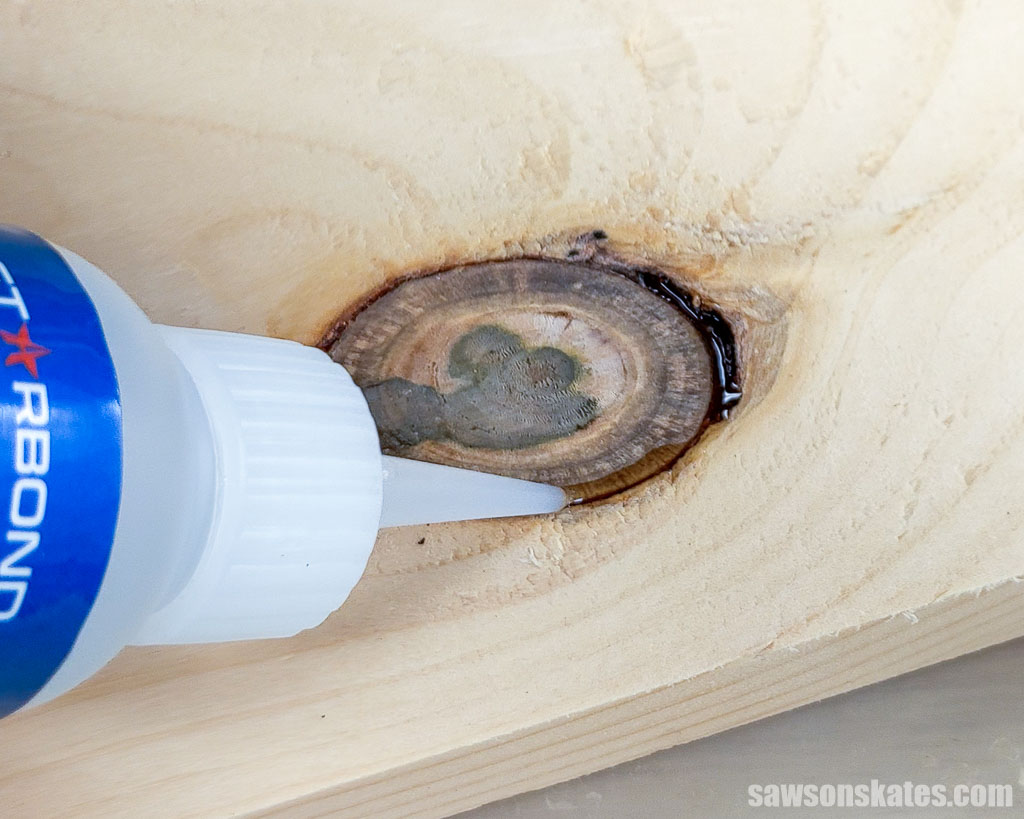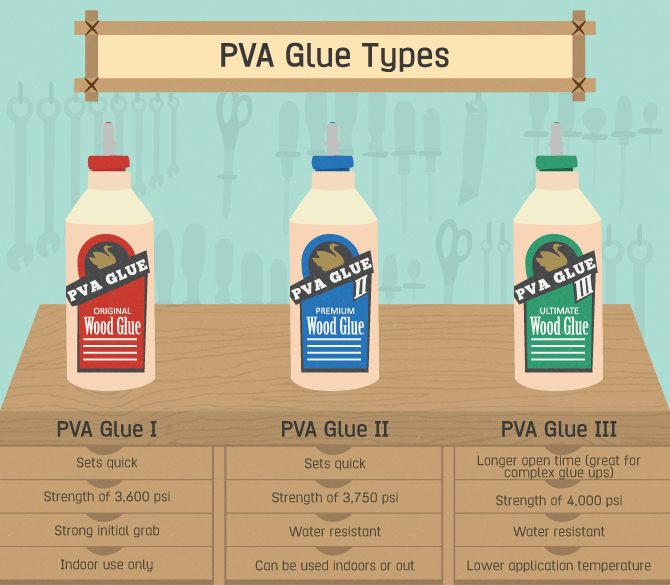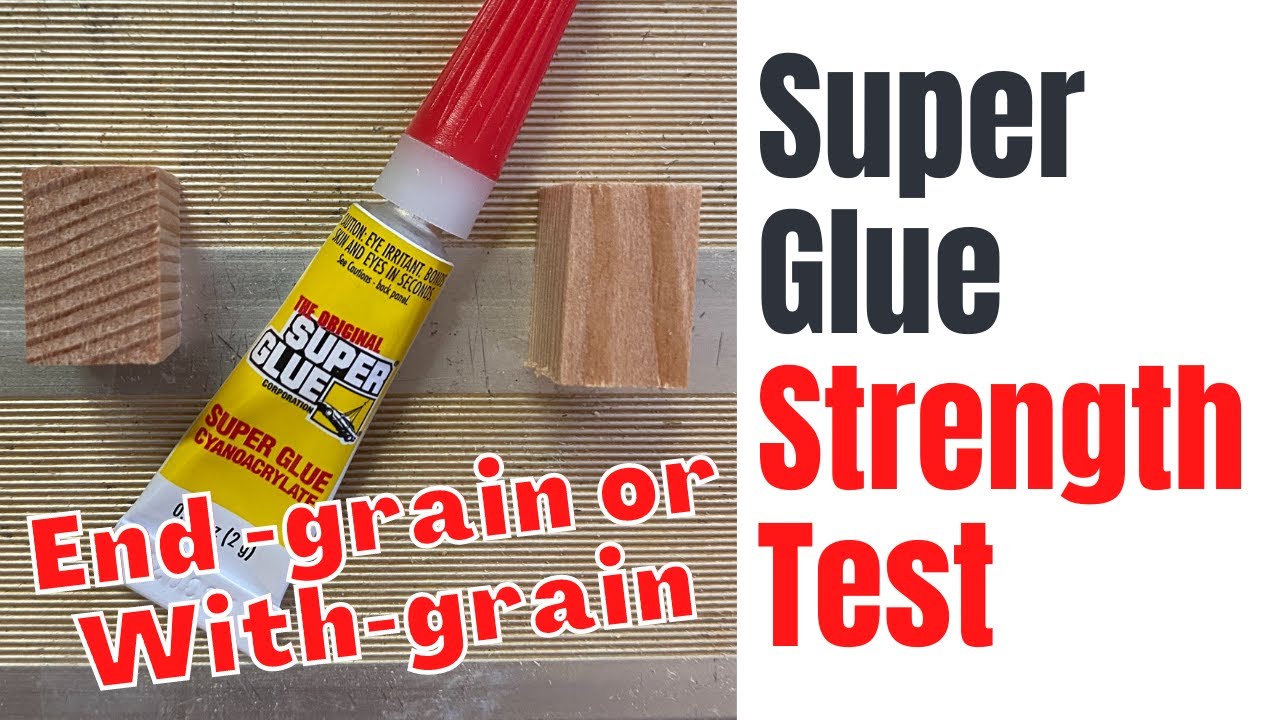When deciding between CA glue and wood glue, consider the project and material. CA glue is ideal for quick fixes and smaller projects, while wood glue is better for larger, more permanent bonds.
Each glue has its strengths and weaknesses, so understanding their differences is key to a successful project. CA glue, also known as super glue, is fast-drying and bonds quickly, making it great for small repairs and projects that require instant adhesion.
On the other hand, wood glue, such as PVA glue, provides a strong, durable bond specifically designed for wood surfaces. It requires clamping and drying time but offers a reliable and long-lasting hold for woodworking projects. By choosing the right glue for your project, you can ensure a successful and sturdy outcome.
Introduction To Ca Glue And Wood Glue
CA glue and wood glue are two of the most commonly used adhesives in woodworking. CA glue, or cyanoacrylate glue, is a fast-drying adhesive that forms a strong bond on contact. It is commonly used for small, precise jobs such as model making or repairing small items. Wood glue, on the other hand, is a slower-drying adhesive that is specifically designed for use with wood. It forms a strong bond that is ideal for woodworking projects, such as furniture or cabinetry.
CA glue is known for its ability to bond quickly and securely to a variety of materials, including wood, metal, and plastic. It is also water-resistant and can be sanded and painted once it has dried. Wood glue, on the other hand, is ideal for use with porous materials such as wood, as it penetrates the surface and creates a strong bond. It is also water-resistant and can be sanded and painted once it has dried.
| CA Glue | Wood Glue |
|---|---|
| Fast-drying | Slower-drying |
| Good for small, precise jobs | Ideal for woodworking projects |
| Bonds quickly and securely to a variety of materials | Ideal for use with porous materials such as wood |
| Water-resistant | Water-resistant |
| Can be sanded and painted once dry | Can be sanded and painted once dry |
Chemical Composition And Properties
CA glue, or cyanoacrylate glue, contains cyanoacrylate as its primary ingredient, which reacts with moisture to form strong bonds. On the other hand, wood glue, also known as carpenter’s glue, is made primarily of water, polyvinyl acetate, and various additives. CA glue sets quickly and forms a rigid bond, while wood glue requires clamping and takes longer to cure. Additionally, CA glue is suitable for bonding non-porous materials such as metal and plastic, whereas wood glue is designed specifically for wood-to-wood bonding. It’s essential to consider the specific requirements of your project when choosing between CA glue and wood glue.
Bonding Strength And Durability
Ca glue offers superior bonding strength and quick drying time, making it ideal for small, precise wood projects. In contrast, wood glue provides exceptional durability and is better suited for larger woodworking applications. Each type has its own advantages, catering to different project requirements.
| Bonding Strength and Durability |
| When it comes to strength, CA glue excels in providing an almost instant bond, ideal for small projects and quick fixes. Wood glue, on the other hand, offers a stronger and more durable bond over time, making it suitable for larger woodworking projects and heavy-duty applications. |
| Strength of CA Glue |
| CA glue, also known as cyanoacrylate adhesive, delivers a high-strength bond quickly, making it perfect for delicate materials and small repairs. However, it may not withstand heavy stress or long-term use as effectively as wood glue. |
| Strength of Wood Glue |
| Wood glue, such as PVA glue, provides a strong and durable bond, making it ideal for woodworking projects and applications that require lasting adhesion. Its ability to withstand pressure and heavy loads sets it apart from CA glue in terms of long-term strength. |

Setting Time And Ease Of Use
Setting time and ease of use are important factors to consider when choosing between CA glue and wood glue. CA glue, also known as cyanoacrylate adhesive, has a fast setting time, typically bonding within seconds. This makes it ideal for projects that require quick results or when working with small, delicate parts. On the other hand, wood glue, such as PVA glue, has a longer setting time, usually requiring several hours or overnight to fully cure.
CA glue’s quick setting time can be advantageous in situations where immediate bonding is needed, but it also leaves little room for adjustments once applied. Wood glue, on the other hand, allows for repositioning and alignment before it sets. This makes it more user-friendly, especially for beginners or projects that require precision.
Both types of glue have their own strengths and weaknesses, so it’s important to consider the specific needs of your project before making a decision. Whether you prioritize speed or flexibility, understanding the setting time and ease of use of CA glue and wood glue will help you choose the right adhesive for your woodworking needs.
Versatility And Material Compatibility
When it comes to CA glue, it offers versatility in various applications such as bonding metal, plastic, and rubber. Additionally, it is suitable for filling small gaps and cracks due to its low viscosity. On the other hand, wood glue is specifically designed for wood-to-wood bonding, providing a strong and durable bond. Moreover, it is ideal for porous materials and offers a longer working time, allowing for precise assembly. In addition, it is essential to consider the specific properties and material compatibility when choosing between CA glue and wood glue for different applications.

Weather And Temperature Resistance
Weather and temperature resistance are important factors to consider when choosing between ca glue and wood glue. Both types of glue have their own strengths and weaknesses in terms of durability and performance in different weather conditions. It is crucial to select the right glue that can withstand extreme temperatures and weather conditions to ensure a long-lasting and reliable bond.
| Weather and Temperature Resistance |
|---|
|
Safety And Environmental Considerations
When considering the use of CA glue versus wood glue, it is important to take into account safety and environmental considerations. CA glue, also known as super glue, can be irritating to the skin and eyes, and should be used in a well-ventilated area.
On the other hand, wood glue is generally non-toxic and more environmentally friendly, making it a safer option for certain applications.
| Ca Glue | Wood Glue |
| Highly flammable and can cause skin and eye irritation. | Non-toxic and safe for general use. |
| Use in well-ventilated areas and wear protective gear. | No special precautions needed, but avoid ingestion. |
| Quick-drying, be cautious to prevent skin bonding. | Slower drying time, no risk of accidental bonding. |

Cost Comparison And Value For Money
When comparing the cost of CA glue versus wood glue, it’s important to consider the value for money. While CA glue may be more expensive upfront, its fast drying time and strong bond can make it a cost-effective choice for certain projects.
On the other hand, wood glue is generally more affordable and suitable for traditional woodworking applications. Both options offer value for money based on specific project requirements.
| CA Glue | Wood Glue |
| Typically more expensive per ounce. | Generally more cost-effective. |
| Small amounts go a long way. | Requires more product for the same job. |
Final Thoughts: Choosing The Right Glue
Choosing the right glue can be a crucial decision for any woodworker or DIY enthusiast. When deciding between CA glue and wood glue, it’s important to consider the project’s requirements and the materials being used to ensure a strong and lasting bond.
| Considerations | CA Glue | Wood Glue |
| Strength | Quick setting, ideal for small projects | Strong bond, great for heavy-duty applications |
| Flexibility | Brittle, not suitable for areas under stress | Flexible, absorbs vibrations |
| Application | Precision application due to fast curing | More forgiving, allows for adjustments |
Frequently Asked Questions
Can Ca Glue Be Used On Wood?
Yes, CA glue can be used on wood. It bonds quickly and provides a strong, durable hold. However, it is important to choose the right type of CA glue for wood projects, as some formulations are better suited for specific wood types and applications.
What Is The Difference Between Ca Glue And Wood Glue?
The main difference between CA glue and wood glue is their composition and drying time. CA glue, also known as cyanoacrylate glue, is a fast-drying adhesive that bonds quickly. Wood glue, on the other hand, is a slower-drying adhesive that forms a strong bond over time.
Additionally, wood glue is designed specifically for woodworking projects.
Which Is Stronger, Ca Glue Or Wood Glue?
Both CA glue and wood glue can provide strong bonds, but the strength may vary depending on the specific application. In general, CA glue offers a stronger bond due to its fast-drying and high-strength properties. However, for certain woodworking projects that require longer drying times, wood glue may be a better choice for achieving maximum strength.
Can Ca Glue Replace Wood Glue?
CA glue can be used as a substitute for wood glue in certain applications. Its fast-drying nature and strong bond make it suitable for quick repairs and small woodworking projects. However, for larger or long-term projects where longer drying times and maximum strength are required, wood glue is still the preferred choice.
Conclusion
After weighing the pros and cons of CA glue and wood glue, the choice ultimately comes down to the project at hand. If you need a strong, fast-drying adhesive for small projects and repairs, CA glue may be the way to go.
However, for larger projects or those requiring a longer set time, wood glue may be the better option. It’s important to consider the materials being bonded and the intended use before making a final decision. By understanding the differences between these two types of glue, you can choose the best option for your specific needs.

